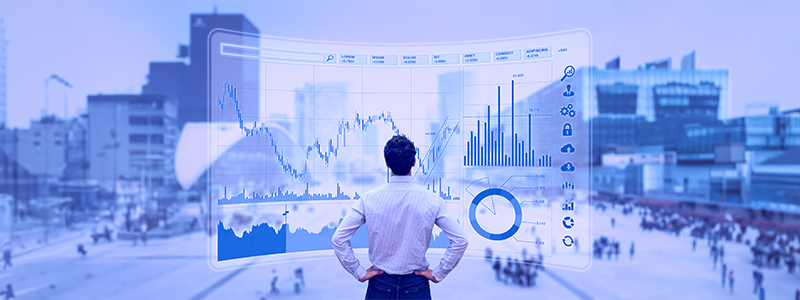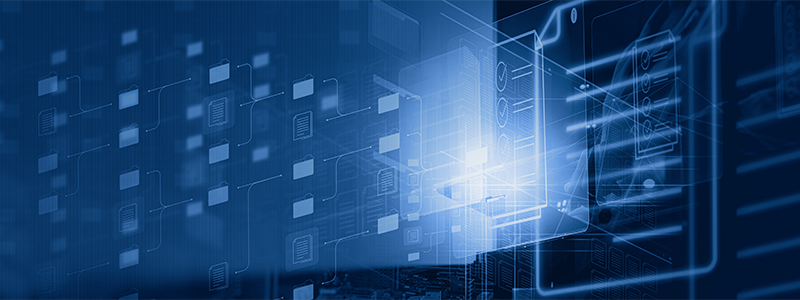
Crafting a Successful Application Modernization Strategy
92% of enterprises are working on or planning an application modernization strategy. This trend shows a growing focus on upgrading technology. Modernizing existing systems and data infrastructure allows organizations to turn old, inefficient setups into flexible, scalable solutions that support future growth. These initiatives mitigate the risks of outdated technology and position companies to take advantage of new opportunities, such as big data analytics and integration with cloud technologies.
What Is Application Modernization?
Application modernization transforms outdated or legacy applications into modern, efficient, and adaptable systems. Legacy applications are developed on older technology frameworks and languages and often need help to meet businesses’ increasing demands. They lack scalability, offer limited integration capabilities, and are susceptible to security breaches.
Application modernization addresses these limitations by renovating and updating these applications, including refactoring the codebase, migrating to new platforms or cloud environments, and enhancing the user interface and experience, ensuring they align with current business objectives and technological advancements.
Modernized applications are designed to be agile, flexible, and scalable. They can adapt to changing market dynamics and leverage emerging technologies such as cloud computing, artificial intelligence, and machine learning. Modernizing the applications allows businesses to streamline operations and enhance customer experiences.
Six Legacy Application Modernization Approaches to Consider
When designing an application modernization strategy, businesses have several approaches to consider. The choice depends on factors such as the desired outcome, budget, timeline, and the complexity of the existing legacy applications. Here are some popular approaches:
-
Encapsulate
Encapsulation involves wrapping the legacy system in a new layer or interface to expose its functionality as services without altering the core application.
- Best Use Case: This is ideal when an organization needs to quickly enhance and extend application features without modifying the core application. It also allows organizations to expose legacy functions as modern services using APIs.
- Tools Required: API Management Tools, Integration Platforms.
- Unique Benefits: Quick enhancement of legacy systems, cost-effective, minimal disruption, and better integration with modern applications
- Challenges/Limitations: Limited by the existing application’s capabilities and architecture. May not address underlying issues or technical debt.
-
Rehost
Rehosting, or “lift and shift,” involves moving applications to a new infrastructure environment without altering their code or architecture.
- Best Use Case: Suitable for stable applications that need to move to a more cost-effective or performant infrastructure without code changes.
- Tools Required: Cloud Migration Tools, Orchestration Tools.
- Unique Benefits: Low risk, minimal effort, quick results, and reduced operational costs.
- Challenges/Limitations: This does not improve the application itself; any existing issues or inefficiencies in the code remain.
-
Replatform
Replatforming involves migrating an application to a new runtime platform with minimal code changes to leverage better performance or cost savings.
- Best Use Case: When organizations need better performance or lower operational costs by shifting to a new runtime platform with minimal code changes.
- Tools Required: Cloud Migration Tools, Database Migration Services, Application Management Tools.
- Unique Benefits: Improved performance, cost savings, minimal code changes, and quick migration.
- Challenges/Limitations: Adjustments to the application configuration may be required, and potential compatibility issues with new platform services exist.
-
Refactor
Refactoring involves changing the internal structure of the application code without altering its external behavior to improve performance and maintainability.
- Best Use Case: This is ideal for applications with technical debt or performance issues, where optimization can improve maintainability and efficiency.
- Tools Required: Code Analysis Tools, Refactoring Tools, Integrated Development Environments (IDEs).
- Unique Benefits: Enhanced performance, maintainability, reduced technical debt, and better scalability.
- Challenges/Limitations: It can be time-consuming and requires a thorough understanding of the existing code; there is a risk of introducing new bugs.
-
Rearchitect
Rearchitecting involves significantly changing the application’s architecture to adopt modern technologies and improve scalability, performance, and flexibility.
- Best Use Case: Best for applications requiring significant architectural changes to leverage modern technologies and capabilities.
- Tools Required: Application Development Frameworks, Microservices Tools, Cloud-Native Development Tools.
- Unique Benefits: Modernized architecture, improved scalability, better performance, and long-term flexibility.
- Challenges/Limitations: High complexity and risk; requires significant investment in time and resources; potential for major disruptions.
-
Rebuild
Rebuilding involves redesigning and redeveloping an application from scratch using modern technologies and frameworks to meet new requirements.
- Best Use Case: When the application is outdated and needs a complete redesign to meet new requirements and technological advancements.
- Tools Required: Full-Stack Development Tools, Application Development Platforms, DevOps Tools.
- Unique Benefits: Brand new application, modern technologies, alignment with current business needs, and improved user experience.
- Challenges/Limitations: Most expensive and time-consuming approach; requires thorough planning and execution; risk of scope creep.
Prerequisites for Creating an Application Modernization Strategy
Creating an effective application modernization strategy requires thorough planning and assessment. Five key prerequisites include:
- Comprehensive Assessment: Understanding the current state of legacy applications, including performance issues, technological debt, and alignment with business objectives, is essential. This assessment should consider the technical stack, dependencies, and integration points with other systems. Conducting a SWOT analysis (Strengths, Weaknesses, Opportunities, Threats) can provide a detailed view of where modernization efforts should be focused.
- Clear Objectives: It is crucial to define what modernization will achieve, such as improved performance, reduced operational costs, enhanced user experience, or better scalability. Establishing clear and measurable goals helps prioritize initiatives and allocate resources effectively. Objectives should align with the business strategy and key performance indicators (KPIs).
- Stakeholder Engagement: Key stakeholders, including business leaders, IT teams, and end-users, should be involved to gather insights and ensure alignment with business goals. Effective communication and collaboration across departments ensure that the modernization efforts address the needs and expectations of all parties involved. Stakeholders can also help identify potential challenges and opportunities for innovation.
- Skills and Resources: To execute the modernization strategy, it is vital to ensure the necessary skills and resources, including knowledgeable staff and appropriate tools. This might involve training existing staff in new technologies, hiring new talent, or partnering with third-party experts. Investing in modern development and management tools can also facilitate smoother transitions and ongoing operations.
- Risk Management: It is critical to identify potential risks associated with modernization, such as downtime, data loss, or security vulnerabilities, and develop mitigation plans. Conducting a thorough risk assessment and developing contingency plans helps minimize disruptions and ensure a successful modernization process. Regular monitoring and reviewing the strategy can help adapt to unforeseen challenges and maintain
An 8-Step Legacy Application Modernization Plan
These steps ensure a structured and effective modernization process for legacy applications.
-
Initial Analysis and Feasibility Study
- Compile a comprehensive list of applications, their functions, and dependencies.
- Evaluate the existing architecture, technology stack, performance metrics, security measures, and overall health.
- Assess the modernization feasibility for each application by evaluating (such as compatibility with modern technologies and scalability), financial impacts (including costs of implementation and potential return on investment), and operational effects (such as disruptions to current processes and resource requirements).
-
Business and Technical Alignment
- Define and align modernization goals with business objectives such as increased agility, reduced costs, improved user experience, or compliance.
- Determine the technical requirements and constraints, including scalability, maintainability, and compatibility with existing systems.
-
Choose Modernization Approach
- Consider different modernization approaches such as encapsulate, rehost, replatform, refactor, rearchitect, and rebuild, and choose the most appropriate approach based on the specific needs of each application and the overall strategy.
-
Detailed Planning and Design
- Develop a detailed project plan with timelines, milestones (key points of progress), resource allocation (distribution of personnel, equipment, and tools), and budget estimates.
- Design the new architecture, focusing on modern principles such as microservices, cloud-native infrastructure, and API-first development.
- Plan data migration, including data cleaning, transformation, and transfer to the new system.
-
Implementation and Migration
- Depending on the chosen strategy, prepare the new environment, which could be on-premises, cloud, or hybrid.
- Begin development or refactoring as per the modernization approach chosen, using agile methodologies for iterative progress.
- Execute data migration in phases to ensure data integrity and minimal disruption to operations.
- Integrate the modernized application with existing systems, ensuring seamless communication and data flow.
-
Testing and Validation
- Validate that the application meets all functional requirements and performs as expected.
- Test the application under various conditions to ensure it meets performance benchmarks.
- Conduct security assessments to identify and mitigate vulnerabilities.
- Engage end-users to validate that the application meets business needs and usability standard.
-
Deployment and Rollout
- Depending on risk tolerance and business impact, plan the deployment strategy, which may include canary releases, phased rollouts, or big-bang deployments.
- Provide training sessions for end-users and IT staff and develop comprehensive documentation for future reference and support.
- Execute the go-live plan, ensuring adequate support during the initial period to address any issues.
-
Post-Implementation Review and Optimization
- Set up monitoring tools to track application performance and user satisfaction continuously.
- Gather feedback from users and stakeholders to identify areas for improvement.
- Implement a continuous improvement process to refine and enhance the application based on user feedback and performance data.
Why Take a Proactive Approach to Application Modernization?
A proactive approach to application modernization is essential to stay competitive and ensure long-term success. Modernizing applications before technology becomes obsolete or security issues arise allows businesses to leverage the latest advancements to enhance performance, scalability, and security. This strategy mitigates risks associated with outdated systems and meets evolving customer expectations for seamless user experiences.
For example, a large retail company that modernizes its e-commerce platform from a monolithic to a microservices architecture can rapidly deploy updates such as improved search functionality and personalized recommendations, and new features like real-time inventory tracking and one-click checkout. This ensures the platform can handle peak shopping periods without downtime and reduces the risk of data breaches, ultimately increasing customer satisfaction and sales.
Conclusion
Crafting a successful application modernization strategy is a crucial step for businesses. By leveraging the right approaches, prerequisites, and planning, organizations can transform their legacy applications into powerful assets that drive innovation, enhance efficiency, and deliver exceptional user experiences.
Astera offers a comprehensive suite of tools and expertise to streamline the modernization journey. Utilizing Astera’s robust data integration and API Management platform, businesses can smoothly transition, re-platform, encapsulate, or substitute legacy systems with minimal disruption, unlocking their true potential and ensuring maximum return on investment. Astera’s team of experts provides end-to-end support, ensuring a smooth and successful modernization process.
Don’t let your legacy applications hold you back. Sign up for a personalized demo today!




